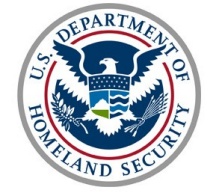
Homeland security grant supports bystander intervention training
BY VICKY SANTOS

A grant from the U.S. Department of Homeland Security (DHS) will help GSE’s Alberti Center for Bullying Abuse Prevention to continue to build youth resiliency and implement bystander intervention training.
The grant will fund development of a Training of Trainers (TOT) training model for two bystander intervention programs: Norms and Bystander Intervention Training (NAB IT!) and Communities Acting to Refer and Engage (CARE). A minimum of 200 high school students at four schools will be trained in NAB IT! At least 200 students and 80 high school faculty and staff will be trained in CARE so they can safely interject when they witness issues of concern.
The CARE training, which is DHS’s Bystander Intervention Training, will be provided to students and school staff in the greater Albany area to enhance their ability to recognize behaviors that might indicate an individual is escalating to violence and identify appropriate steps to get help.
Amanda Nickerson, professor of counseling, school and educational psychology in the Graduate School of Education and director of the Alberti Center, said the CARE training is designed to help both adults and students to identify signs that may indicate that someone is on a path toward engaging in more targeted violence and to learn how to intervene in a safe and appropriate way.
Nickerson is principal Investigator on the grant. Stephanie Fredrick, associate professor of counseling, school and educational psychology and associate director of the Alberti Center, is a co-investigator. Measurement Incorporated is a subcontractor on the grant and will receive the TOT and implement the programs with the schools.
“Broadly speaking, bystander training is an approach that teaches people how to recognize concerning matters, how to make the decision to do something about it, and then to take action,” Nickerson said.
She noted that NAB IT! was developed through an iterative process of testing, implementing and obtaining feedback from students, school administrators, teachers and mental health professionals, and then revising and pilot testing it in two local high schools with funding from the Institute of Education Sciences (IES) in the U.S. Department of Education.
“This current grant is an extension of our work that has tested NAB IT!,” she added. “We found that students participating in the bystander-intervention training showed increased knowledge about bullying and sexual harassment, confidence in intervening and acceptance of responsibility, knowing what to do and acting to intervene (including direct intervention, providing support and reporting to an adult). Building upon the work we’ve done, we’ll be able to implement NAB IT! in four different schools that serve more diverse populations in higher-need communities.”
The five steps of bystander intervention used in NAB IT! are:
- Notice potentially problematic situations.
- Identify when it’s appropriate to intervene.
- Assume personal responsibility for intervention.
- Know how to intervene.
- Take action to intervene.
Nickerson said NAB IT! training takes about five hours. “Because we’re doing it with students, the idea is to do it in smaller chunks over the course of a few weeks. That’s how we pilot-tested it, and that’s how we’re hoping to do it with the schools,” she added.
Nickerson and her colleagues at the Alberti Center have examined the role of schools, parents and peers in preventing violence and enhancing the social-emotional strengths of children and adolescents since the center opened in 2010.
Cover Story
UB’s comprehensive approaches are reshaping literacy education, fostering community partnerships, and preparing future literacy professionals to tackle educational challenges.
